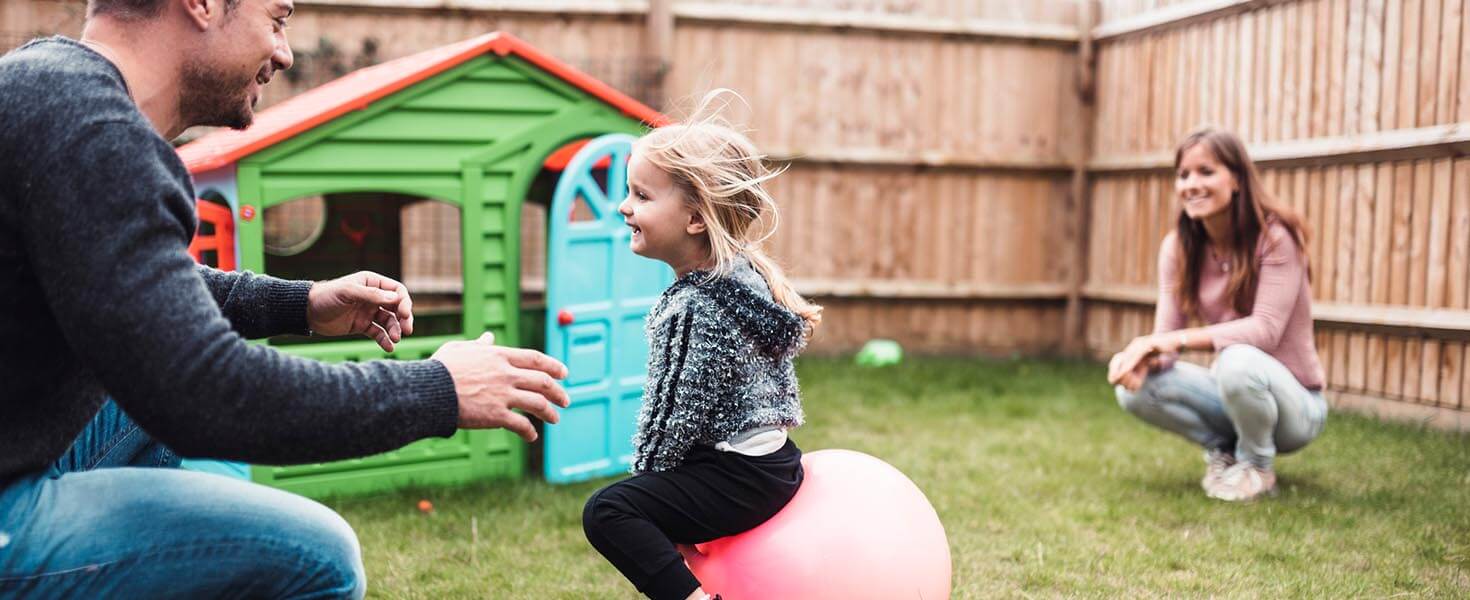
When Cassy Aoyagi and husband Kirk created a backyard play space for their son, they had an advantage. Aoyagi is president of FormLA Landscaping in Los Angeles, which has designed school gardens.
The couple started by looking ahead. “It’s important to think of how quickly kids grow and how much their interests can change as they do,” says Aoyagi, whose son is now 10. “When designing our own garden, we wanted to give our son a safe place to explore as a toddler—topography that would challenge his mind and agility as he grows—and nature that will engage his curiosity.

Landscaping is just part of the picture. With more children playing—and learning—at home, a child-friendly backyard should include interactive activities and natural elements. Here are 10 ways to keep families entertained without leaving the driveway.
Creat a terrain
Hills and valleys invite children to move, Aoyagi maintains. Flat backyard? Add boulders and mulched or gravel channels.
Make some trails
Similarly, gravel or mulch trails encourage children to explore.
Give little ones a soft place to land
Use rubber playground tiles to cover concrete or pavers. “They come in different colors, which will surely attract a child,” says Gena Lorainne a gardening and landscape expert with Fantastic Services in London.
Lorie Anderson, a parenting blogger at MomInformed.com, recommends outdoor carpet that resembles grass. “They’re still going to fall, as kids do, but this keeps everyone a little safer,” she notes.
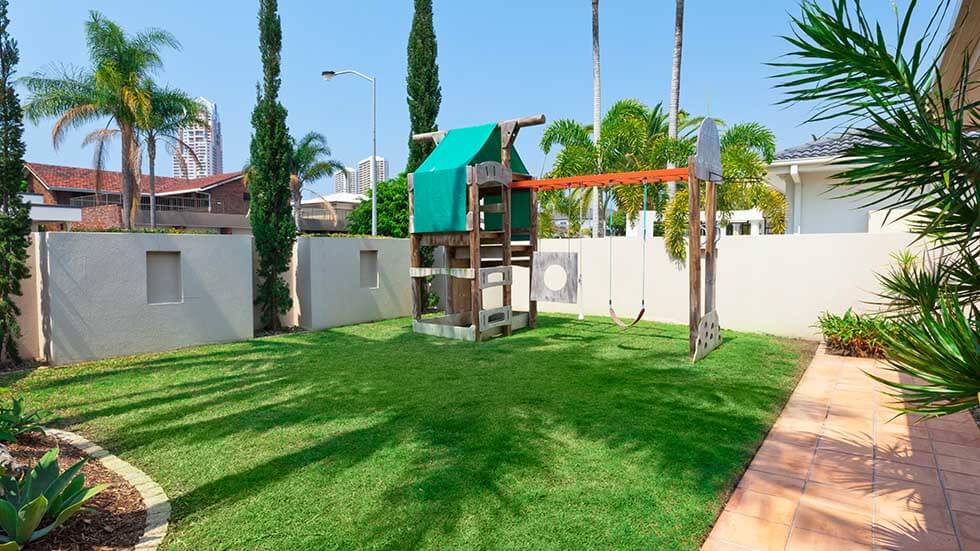
Block off unsafe areas
Tracy Gold, author of “Everyone is Sleepy but the Baby,” uses barriers to keep her daughter from accessing hard steps and tippable planters. She also has a fenced yard. As a result, mom can keep her toes in the pool and write on her laptop while her daughter safely plays.
Improve motor skills
Climbing wall, swings, rope course, steps, and tree stump courses build agility. “Kids grow as they take risks, so build safe risks into your backyard,” says Matt Daigle, CEO and founder of Rise, a site focused on sustainable home improvements.
Don’t forget to add something soft—such as spongy moss, mulch, or woods chips—in the area in case the child takes a tumble.
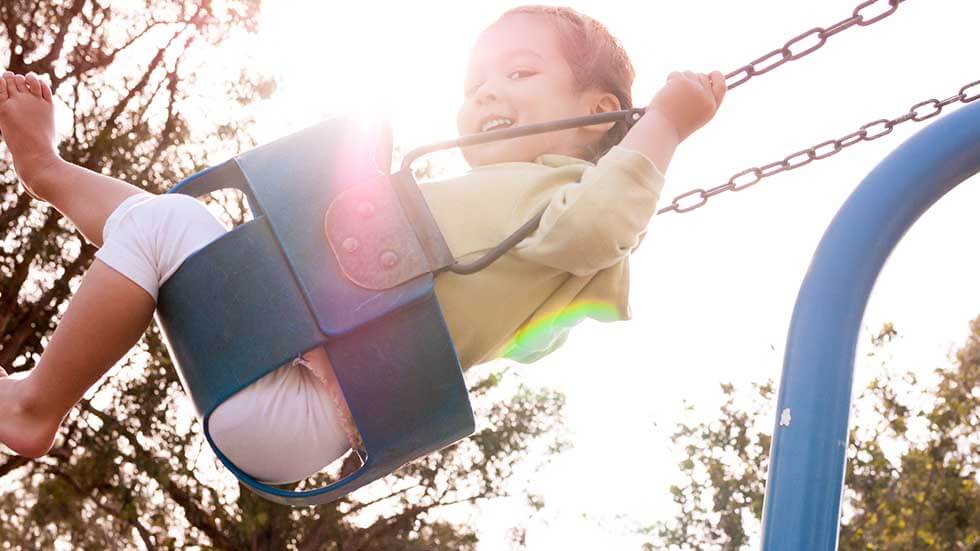
Chalk it off
Chalkboard paint can turn a section of your fence or the side of a playhouse into a canvas.
Install playground equipment
“Swing sets and trampolines are easy fixes, but they’re best for children over 10,” says mom Jeneva Aaron, a writer for the site TheHouseWire.com.
“They’re OK if your kids are old enough that you don’t have to worry about them getting hurt,” she explains, “but they’re not recommended if you have little ones around.”
Low-impact options like playhouses are a safer bet.
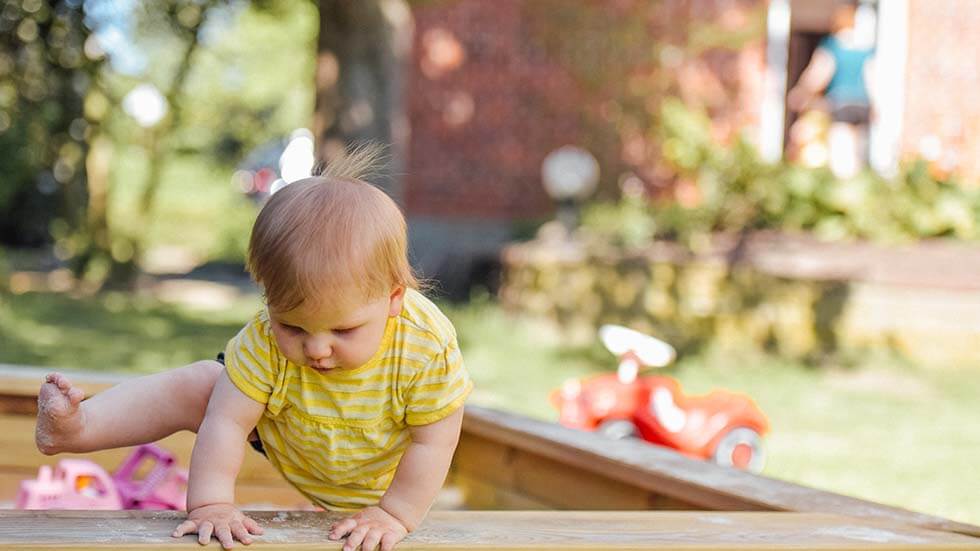
Build a sandbox
“It’s easy to make a sandbox. Use old furniture, such as a bookshelf turned on its back,” Lorainne suggests. Fill one space with sand and the other with toys.
Find and dismantle some wood pallets to create your design. Line it with a tarp, and fill with sand. Don’t forget to paint it in bright colors.
Feed the birds
Birdbaths and feeders will turn your backyard into a “PBS nature show,” Aoyagi says. “Give your children books on birds and bugs and magnifying glass then send them off to explore,” says Sarah Miller, a teacher and founder of Homeschooling4Him.com.
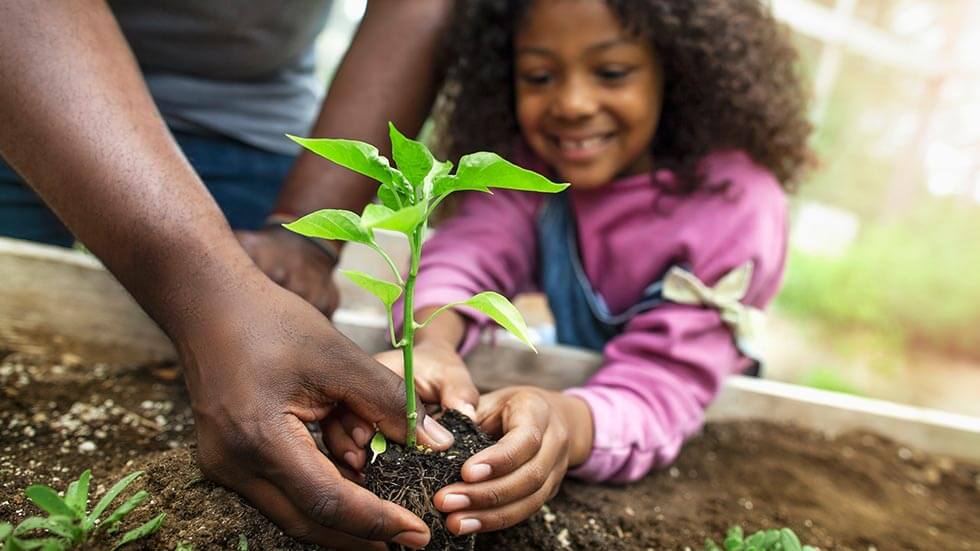
Grow a garden
“Digging, scooping, and planting exposes kids to nature and builds motor skills,” says John Kelly, whose family has the blog Grow My Own Health Food.
Tending a plot or pot develops a sense of responsibility. Plus, a vegetable garden will teach kids about healthy eating—they are more likely to eat their veggies if they harvested them.
Make sure your child doesn’t “tend” the garden unsupervised. Aaron’s daughter liked watering the garden so much that she went outside, turned on the hose and flooded the area with about 30 gallons of water.
Think outside the flower bed. Miller used sticks and climbing bean plants to create a natural tent. As the plants twined around the sticks, they created a shady getaway for her children.
Incorporate fragrant foliage and plants that change with the seasons. “Really, a garden should be a feast for the senses,” Aoyagi says.
